-
How to Prevent Garage Fires
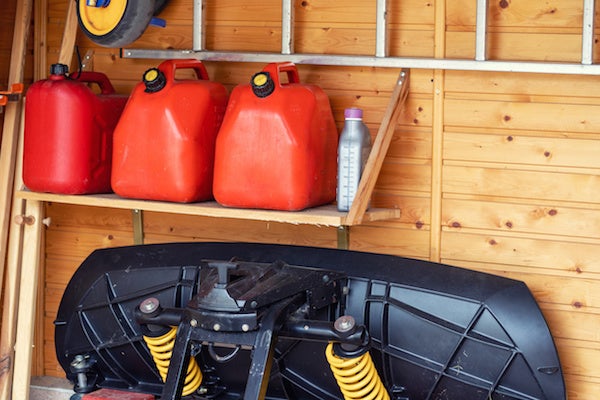
Owners and renters invest a great amount of time and money to prevent or minimize fire damage. Local building codes set a number of standards to reduce fire hazards. Fires can spread quite rapidly from one area to another, including the garage. Within the home, we take several precautions, and we should do so in the garage as well. Here are some tips on how to prevent garage fires.
Take Care of Your Chargers
Many individuals store power tools or other electronics in the garage. If a charger or other device is plugged into a garage outlet, take care to reduce the associated risk of fire. Since electronics emit warmth, allow plenty of space between devices. This will prevent too much heat from building up. Ensure that each device has adequate airflow to its ventilation fan. Proper ventilation will also reduce the risk of fire.
Store Flammables Responsibly
A garage can be home to a number of highly-flammable materials, including gasoline, kerosene, turpentine, and more. Store such items in a fireproof metal cabinet. Make sure that the cabinet door closes securely. By securing the flammables apart from other garage items, you will significantly reduce the amount of fuel for any potential fires. In the event of a fire, the closed metal door can minimize the temperature within the cabinet.
Eliminate Clutter
Garages are commonly intended for storing outdoor items such as garden tools, snow blowers, and bicycles. Over time, many unplanned items take up residence in the garage. Experts recommend that occupants maintain the garage at a “home-like” level of clutter. Each item is flammable to some degree, so clutter removal is one of the most effective ways to reduce the risk of fire.
Each year, Americans spend billions of dollars on home fire insurance and fire prevention methods. A number of house fires begin in the garage. The garage is usually attached to or close to the home, so it is important to prevent fires in the garage as well as the home. By limiting the potential fire hazards as listed above, an owner or renter can help prevent garage fires. For more helpful information about keeping your home safe and secure, browse the Thomas V. Giel Garage Doors, Inc. blog.
-
Common Winter Door Problems and How to Fix Them
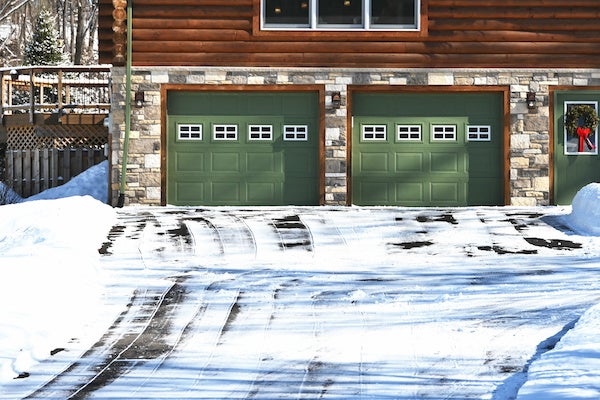
For people living in colder climates, winter can be harsh and destructive. Icy winters can produce a number of troubles. Car batteries are strained, walkways become slippery, and garage doors can start having problems. Many of these issues can be resolved without enlisting a professional. Check out these common winter door problems and how to fix them.
Ineffective Lubricant
In warm temperatures, lubricants are more runny and can move around easily. During the winter, lubricants become more dense, and heavy grease may not move easily enough to properly lubricate the garage door opener. Lubrication reduces the amount of work a motor must perform in order to open the garage door. If a heavy grease has been used, apply an even coat of a silicone-based lubricant. A local hardware store will most likely carry a product designed specifically for garage doors.
Frozen Garage Door
During periods of prolonged freezing, garage doors may become frozen and refuse to budge. Frozen garage doors are highly inconvenient, and they can cause further damage to the garage door opener. An immobile door strains the motor, and pieces of the door itself can break if the door is forced open. Where the door meets the ground, remove any existing ice with hot water and a snow shovel. Once the area is clear and dry-ish, apply ice melt as needed. Regular snow removal can prevent future icing.
Fatigued Metal Parts
Metal parts (such as springs) often face additional strain during winter months. More force is often required to open the door in the cold, due to less lubrication and other issues. The increased work can advance a metal part from being strained to outright fatigued. Cold temperatures often render moving parts brittle, and more likely to snap. To avoid potential damages, replace worn parts before they have a chance to break.
Winter can be a festive time for visits and winter sports. The cold season, however, is a time when extra precautions must be taken. Preventative measures can improve the lifespan of the door opener while preventing lockouts. If you run into any of these common garage door problems this winter, the solution may be rather simple.
If your garage door is causing your problems, schedule a service call with Thomas V. Giel Garage Doors, Inc. experts. For more helpful information about maintaining your garage door, browse the Thomas V. Giel Garage Doors, Inc. blog.
-
How to Make Your Garage Door More Secure
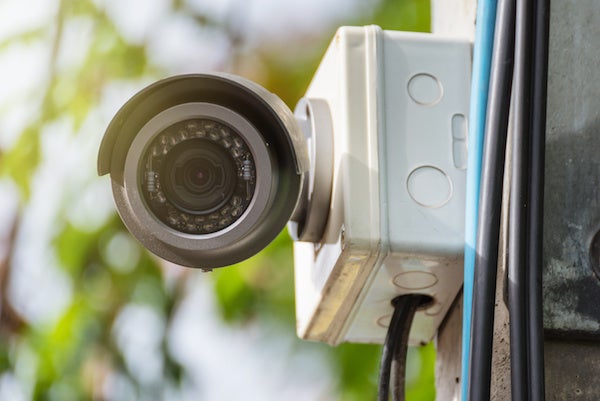
Home security is a top priority for homeowners and renters alike. Each year, Americans spend billions of dollars on home security systems. Doors and windows can be secured by locks and even iron bars, but homeowners often puzzle over what to do with the garage. Below are some tips for making your garage door more secure.
Lock Doors
It may seem like a given, but many homeowners (and renters) do not possess garage door locks. These simple devices can be purchased for around $10 and are relatively easy to install. Like other types of locks, a garage door lock requires a key for entry. For additional security, lock the door between the garage and the home. This simple task can further deter anyone who managed to gain entry to the garage.
Frost Windows
Garage windows serve to let in natural light as well as adding a little style to any structure. Clear garage windows, however, cannot prevent peeping eyes from discovering what treasures lie within. Homes are less likely to be targeted if belongings are easy to view. Keep your items hidden (more or less) by frosting the windows in the garage and garage door.
Motion-Detecting Lights
Would-be burglars go to great lengths to remain unseen. A motion-detecting light can help thwart criminal activity in two ways. First, it illuminates the area so that their activity can be seen more easily. Second, and perhaps more importantly, when an exterior light is turned on, it sends a message along the lines of, “I see you.” Criminals often walk away if they think someone is watching them. Install a motion-sensitive flood light over any area that could use added security.
Monitor Activity
Home surveillance can include much more than a video recording. Many systems are viewable remotely, meaning that a garage door can be monitored from the office or vacation destination. Most of these will notify you when movement is detected. Some systems have microphones and speakers, allowing the residents to communicate with visitors.
Garages provide a way for residents to both store a vehicle and access the home. While a garage door is highly convenient for the home’s occupants, it may also be seen as a convenient access point for intruders. Consider the points above to help make your garage door more secure. For more helpful information about keeping your home secure, browse the Thomas V. Giel Garage Doors, Inc. blog.
-
3 Tips for Preventing Injuries Caused By Garage Doors
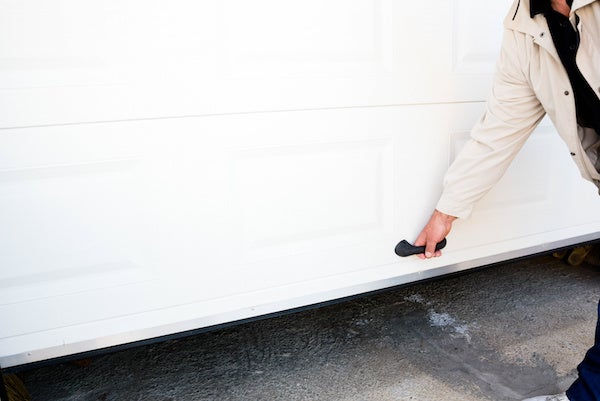
Many American families enjoy a wide array of conveniences such as power tools, televisions, and toasters. Each device, however, has inherent risks. Homeowners take necessary precautions, both indoors and outdoors, to avoid floods, fires, and other mishaps. Home safety should also include the garage. Here are some tips for preventing injuries caused by garage doors.
Safety Mechanisms
Garage door companies aim to minimize the risk of injury to homeowners. One way such businesses achieve this is to offer various safety mechanisms for the garage door. A key safety feature is known as “auto reverse.” This feature means that the door will stop closing (or opening) if it encounters a physical obstacle. Motion detection sensors will cause the door to open if a potential obstacle crosses the path of the garage door. Garage doors should come equipped with a manual release, which allows the homeowner to open and close the door by hand if necessary.
Monthly Inspection
Every month, take inventory of which garage door components seem to need extra attention. Look for rust on any metal parts. Commonly worn areas include the rollers, springs, and cables. A garage door should always run smoothly, even if it is old. Check for unsteady movement or unusual sounds. Wipe clean any very dirty areas, and ensure that metal joints are well-lubricated. If you notice something suspicious, contact a professional for an evaluation. Even if the issue proves minimal, it’s better to err on the side of caution.
Professional Maintenance
Garage door manufacturers recommend that a door be serviced every six months. Doing this will allow potential problems to be corrected before they become a safety issue. The professionals at Thomas V. Giel Garage Doors, Inc. can determine when belts and bolts have become “too worn.” Our experts often check areas where a homeowner may not have considered. Preventative maintenance should only be performed by a professional. The garage door opener is a delicate, powerful system. Avoid mishaps by leaving maintenance and repairs to the experts.
We want our homes and property to be functional, beautiful, and safe. Homeowners vigilantly monitor home security, fire hazards, and other safety concerns. A garage door is generally used several times a day. Like a home entry door, a garage door must be maintained, and repaired when necessary, to maximize safety for the family. The process above will help prevent injuries caused by garage doors.
-
Maintenance to Get Your Garage Door Ready for Cold Weather
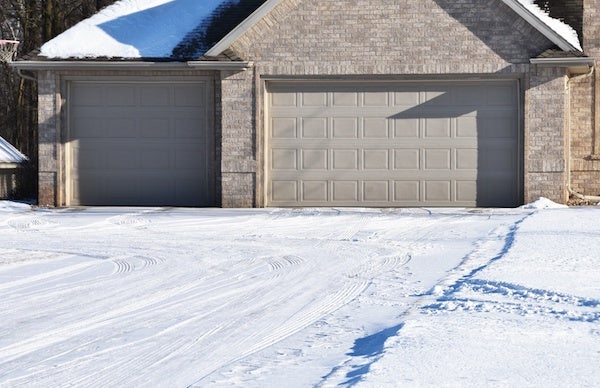
As the weather cools, many homeowners find themselves preparing for winter. Homes are cleaned, and vehicles are serviced. Include the garage door in your home maintenance this year. Below are some ideas for fall maintenance to get your garage door ready for cold weather.
Lubricate
Somewhere in the back of our minds, most of us are aware that garage doors have moving parts and should be lubricated. The reason why doors need lubricant is because moving parts (especially the metal ones) create friction when rubbing together. Increased friction means increased strain on the garage door opener and can lead to mechanical issues. Moving metal parts should be greased every six months with a lubricant designed specially for garage door openers.
Weather Stripping
Weather stripping is a key feature on garage doors. It serves both to protect the garage from drafts and to cushion the door itself. Each year, weather stripping is exposed to harsh conditions such as heat, cold, wind, sun, and rain. Everyday use can also cause wear. Check for areas that are cracked, chipped, or are detached from the door. Repair or replace damaged weather stripping in order to better protect your garage from the elements.
Clean
During the winter, salt and dirt can build up on a garage door, eating away at the finish. Before that can happen, be sure to wash off any existing residue from the garage door. Touch up any areas where the door could use refinishing. Also check the garage door opener and clean any dirty parts, such as the tracks. The onset of winter is also a good time for ensuring the garage itself is clean and organized.
Whether it’s the cooler weather or simply the change of seasons, something motivates people to perform home cleaning and maintenance. Each home feature is important, including the garage door. Avoid costly repairs by maintaining a properly cared-for garage door. Your wallet will thank you. For more helpful information about garage doors, browse the Thomas V. Giel Garage Doors, Inc. blog.
-
How Can an Insulated Garage Door Save You Money?
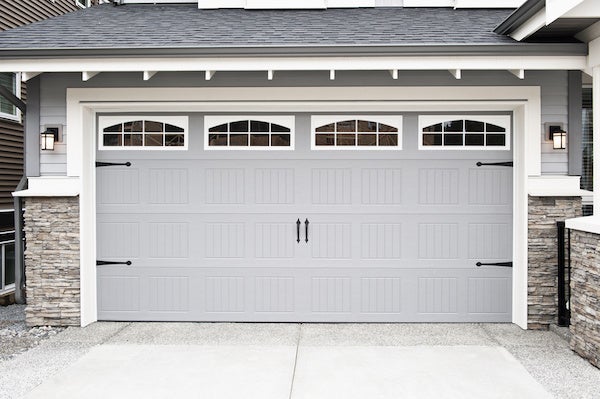
As the weather cools, many homeowners consider strategies for staying warm while saving money. Insulation is a common decision, often taking the form of double-paned windows, new weather stripping, or actual fiberglass insulation. One area where insulation can be particularly useful is the garage. Below are some ways an insulated garage door can save you money.
Energy Efficiency
Insulation is known to keep warm areas warm and cold areas cold. Walls in homes and garages are often filled with the stuff. The garage door more or less composes an entire wall of the garage, so insulating the door would significantly boost the energy efficiency of the garage as a whole. When the door between the home and garage is open, cold air from the garage mixes with warm air from the house. A warmer, better-insulated garage will bring warmer air into the home. This will lower the home’s heating costs. This principle is also true for air conditioning in the summer.
Secondary Savings
An insulated garage door can also save money by protecting garage-storage items. A car battery, for example, will have a longer lifespan in more moderate temperatures. This is true also for tires on bicycles and lawn mowers. Canned food and other liquids can be stored more confidently in a better-insulated garage. Wooden items, such as garden tools, are easier to maintain in milder conditions. In a well-insulated area, hard plastics like sleds or storage containers are less likely to crack. Additionally, insulated garage doors recoup an average of 72% of their value when the owner decides to sell the home.
Most homeowners actively pursue avenues for saving money. During the cold months, money-saving ideas tend to involve improving a home’s energy efficiency. One major component of a home is the garage. Adding an insulated garage door can increase heating efficiency. Insulated garage doors also offer protection for the garage’s contents, saving money and providing peace of mind.
For more helpful information on garage doors, browse the Thomas V. Giel Garage Doors, Inc. blog.
-
3 Tips for Troubleshooting Your Garage Door Opener
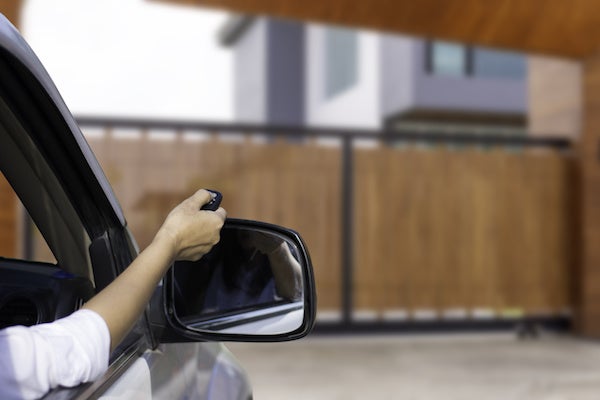
A garage is a convenience which is too often taken for granted. It is easy to forget how much we’ve come to rely on them. We quickly remember, however, if the garage door opener malfunctions. When a garage door opener begins to underperform, there are a few ways to correct the problem on your own. Below are some tips for troubleshooting your garage door opener.
Electrical
Garage door openers are powered by electricity, so there is a possibility that the device is not getting the power it needs. If your opener does absolutely nothing (that is, no noise, no movement,) when the button is pushed, first check the power source. Confirm the garage door opener is plugged in to an outlet and that the outlet is working. To test an outlet, plug another device (such as a night light) into the outlet in question. If the device powers up, it means the outlet is working. Also test any extension cords using the same method, being sure to plug the cord into the power source before testing the output. Voltage readers can also be used. If an electrical issue cannot be solved at the power source, it is best to call a professional for repairs.
Mechanical
The moving parts in a garage door require regular maintenance. Still, mechanical malfunctions can occur. These may include grinding noises, the door or belts off their tracks, and abnormal rattling or jarring. A good first step is to lubricate. Use a designated “garage door lubricant”; WD-40 won’t do the trick here. A spray lubricant will make quick work of cracks and crevices. Be sure to cover the metal joints (including the links of a chain) and springs. Clean inside the tracks using a rag. After lubricating, open and close the garage door a few times to distribute the grease. Since the garage door opener is a complex mechanical system, it’s best to reach out to a licensed professional for more serious mechanical issues.
Safety Features
Garage door openers come with features to ensure safety. The auto-reverse function serves to re-open a door if it encounters any obstacle while closing. Test this by standing a roll of paper towels and closing the door on them. The door should reverse on contact. Doors may also reverse (or fail to close altogether) if the infrared sensor is tripped. The infrared sensors are located on either side of the frame, typically near ground level. Wipe them clean. Dust on the screens can trip the sensors. Sensors can also be tripped by a certain angle of sunlight. You can bypass the sensors by holding down the button at the wall.
Like most machinery, a garage door opener can occasionally misbehave. While many repairs are best left to a professional, you can try a few simple solutions at home. After determining if the problem is electrical, mechanical, or due to a safety feature, try these troubleshooting tips to get your garage door opener working the way it should. For more helpful information about garage doors openers, browse the Thomas V. Giel Garage Doors, Inc. blog.
-
Should I Invest in a Garage Door Screen?
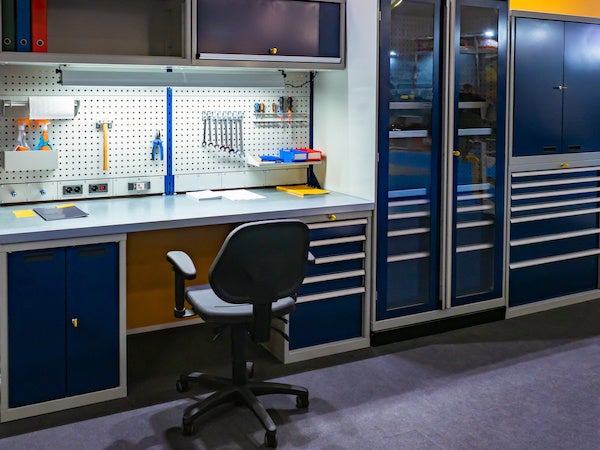
A garage is usually a space for one to store items and cars. Although, at times homeowners do not realize that it is a place that can serve many purposes. You can make this space a workshop, or even an office. But if you decide to go this route then it is a good idea to invest in something called a garage door screen. There really are many positives and benefits that can come from making this purchase. One being that they are affordable and easy to maneuver. Here are some reasons as to why the addition of a garage door screen is an excellent idea.
Bugs and Pests
When you implement a screen on your garage door you avoid the nuisances that are bugs and other creepy crawly pests. With the addition of a screen, you make it much more difficult for bugs to get into your home.
Circulation
When you consider the activities that could be done in a garage, it may cross your mind how you are going to keep it cool in the summer. It can get dangerously hot in your garage, so it is only natural to open your door to let in some fresh air. With a screen, you can do this with the peace of mind that no unwanted visitors will creep in.
More Secure
It is not abnormal for a homeowner to forget to close their garage door when they leave. This will look like an open invitation to any criminal that is looking for an easy opportunity to strike. A screen door will give you peace of mind and deter criminals from breaking and entering.
Energy Efficient
When you make the wise decision to invest in the garage screen, you can save money by opting out of installing an AC unit. With the extra circulation that comes from being able to safely open your garage door, you have the luxury of having your garage door without having to spend extra on energy.
More Clean
When the weather outside is frightful, your garage does not have to be. If the winds are blowing leaves and debris, you can know that with the addition of a screen door you will not have to blow out the leaves after a storm.
For more helpful information on garage doors, browse the Thomas V. Giel Garage Doors, Inc. blog.
-
How to Remove Garage Floor Stains

Your garage can quickly become a dirty, messy place if you let it get out of hand. But like most parts of your home, you can combat this issue by keeping up with it regularly. At times, grease and oil can spill and stain the floor of your garage. Your garage is full of machines such as lawn mowers and vehicles that have the potential to leak fluids from time to time. When you notice a stain, it is vital that you clean it as soon as you can, reducing the risk of tracking it into your home, or worse, someone slipping and hurting themselves. There are a variety of methods that can prove to be successful in removing stains from the floor of your garage. There are several different kinds of stains and a different technique to combat each type.
Oil and Grease
The first step to cleaning this type of spill is to sprinkle either sawdust or cat litter onto the stain to absorb the liquid. Next, let the stain soak for an extended period of time before sweeping it up and throwing it away. After you have properly disposed of the sawdust or cat litter, simply drip some detergent or dish soap on the garage floor and let it sit for just under an hour. For the next step you will need to apply some elbow grease, as you will need to scrub the stain thoroughly for up to 15 minutes. Keep in mind that the older the stain, the more difficult it is to remove.
Rust
There are many culprits capable of leaving rust stains, such as nails, hammers, and other tools which are typically found in the garage. To remove these stains, begin by squeezing a lemon directly on the stain and let it sit for approximately ten minutes. Then you need to scrub the stain with a brush and rinse the garage floor with water with pressure. It is possible that you may need to repeat this cycle numerous times.
Paint
These kinds of stains can be difficult to remove, although with a few steps your garage can look good as new. Locate a putty knife and scrape away the paint that is loose and sweep it up with a broom. Pour some trisodium phosphate (TSP) on the area and scrub the paint off. Be sure that you are wearing gloves for your own safety.
For more information considering your garage, browse the Thomas V. Giel Garage Doors, Inc. blog for more helpful hints and tips.
-
5 Tips to Update Your Front Door This Fall
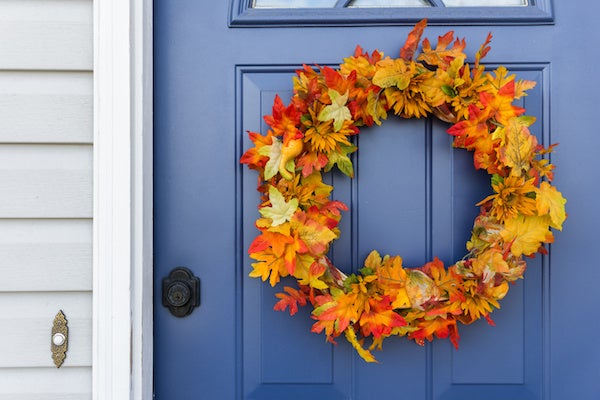
During these times of what seem like life in pause, it can be natural to yearn for change. Drastic changes can be problematic, complicated, and expensive. One change that could satisfy your fix could be fulfilled by simply upgrading and changing the look of your home’s front door. Here are some easy steps to give your front door a fresh new look.
1. Apply a new coat of paint.
Keeping up with the Jones’ can prove to be exhausting and boring, if your home’s front door is the same color as everyone else’s on the block, maybe it is time for a change. A quart of paint runs you a little less than twenty dollars and comes in almost every color.
2. Replace the hardware.
Hardware could be anything from mail slots to handles. If the hardware on your door is out of date, or if you’re simply sick of looking at it, it may be time for a change. This is a simple and inexpensive project that goes a long way.
3. Include a new trim.
If the wooden trim around your door has paint that has begun to chip, then you might want to dress up your front door with a brand new PVC trim that looks like its wooden counterpart, but is much more durable.
4. Spruce up your entryway.
The front door is the first part of your home that most people see. You can tell a lot about a homeowner by the way they decorate their entryway. It can really create a pleasant experience for anybody that visits your home. Add a wreath or a welcome mat to spruce up your home’s main point of entry.
5. Maintain cleanliness in your front yard.
Even if you have completed all other steps and you have the best-looking front door and entry on the block, it would all be for not if your front lawn and entryway is filthy and cluttered. Never forget to continuously take the time to tidy up your yard to keep the attention on the doorway.
There are numberless ways homeowners can improve their homes, as well as their quality of life. For further hints and tips, be sure to take a deep dive into the Thomas V. Giel Garage Doors, Inc. website and blog to find new ways to keep your house up-to-date.
